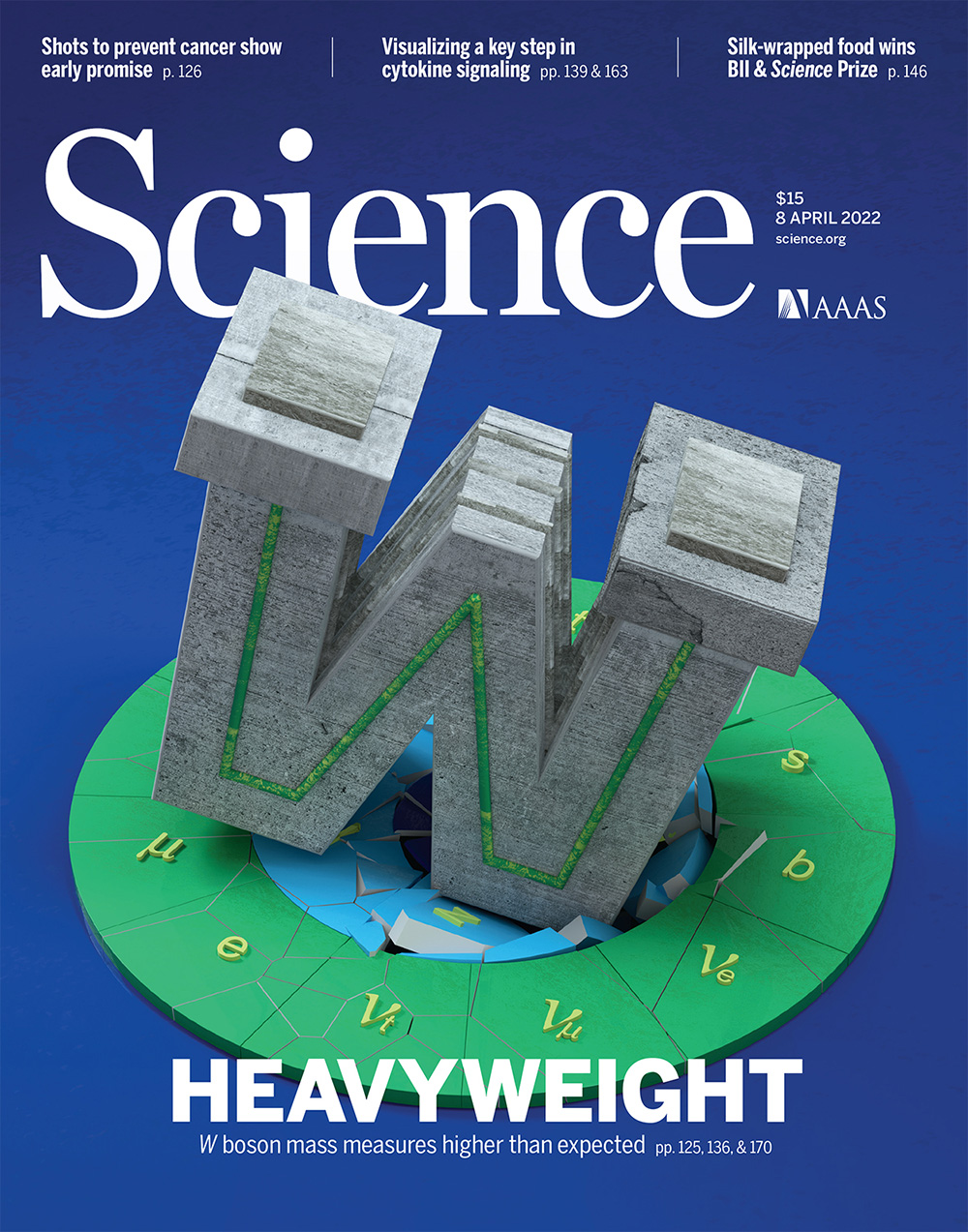The measured value shows tension with the value expected based on the Standard Model of particle physics
April 8th, 2022
After 10 years of careful analysis and scrutiny, scientists of the CDF collaboration at the U.S. Department of Energy’s Fermi National Accelerator Laboratory announced today that
they have achieved the most precise measurement to date of the mass of the W boson, one of nature’s forcecarrying particles. Using data collected by the Collider Detector at Fermilab, or CDF,scientists have now determined the particle’s mass with a precision of 0.01%—twice as precise as the previous best measurement. It corresponds to measuring the weight of an 800- pound gorilla to 1.5 ounces.
The new precision measurement, published in the journal Science, allows scientists to test the Standard Model of particle physics, the theoretical framework that describes nature at its most fundamental level. The result: The new mass value shows tension with the value scientists obtain using experimental and theoretical inputs in the context of the Standard Model.

“The number of improvements and extra checking that went into ourresult is enormous,” said Ashutosh V. Kotwal of Duke University, who led this analysis and is one of the 400 scientists in the CDF collaboration. “We took into account our improved understanding of our particle detector as well as advances in the theoretical and experimental understanding of the W boson’s interactions with other particles. When we finally unveiled the result, we found that it differed from the Standard Model prediction.”
If confirmed, this measurement suggests the potential need for improvements to the Standard Model calculation or extensions to the model.
The new value is in agreement with many previous W boson mass measurements, but there are also some disagreements. Future measurements will be needed to shed more light on the result.
“While this is an intriguing result, the measurement needs to be confirmed by another experiment before it can be interpreted fully,” said Fermilab Deputy Director Joe Lykken.
The W boson is a messenger particle of the weak nuclear force. It is responsible for the nuclear processes that make the sun shine and particles decay. Using high-energy particle collisions produced by the Tevatron collider at Fermilab, the CDF collaboration collected huge amounts of data containing W bosons from 1985 to 2011.
CDF physicist Chris Hays of the University of Oxford said, “The CDF measurement was performed over the course of many years, with the measured value hidden from the analyzers until the procedures were fully scrutinized. When we uncovered the value, it was a surprise.”
The mass of a W boson is about 80 times the mass of a proton, or approximately 80,000 MeV/c2 . CDF researchers have worked on achieving increasingly more precise measurements of the W boson mass for more than 20 years. The central value and uncertainty of theirlatest mass measurement is 80,433 +/- 9 MeV/c2 . This result uses the entire dataset collected from the Tevatron collider at Fermilab. It is based on the observation of 4.2 million W boson candidates, about four times the number used in the analysis the collaboration published in 2012.
